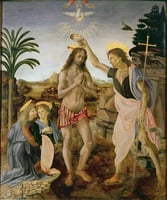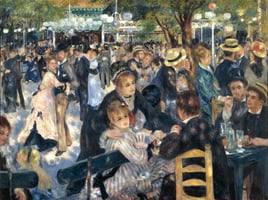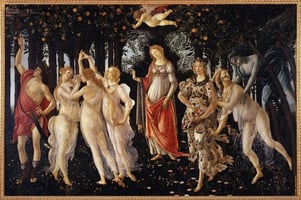Andrea del Verrocchio (1435-1488) was an Italian Renaissance sculptor, painter, and goldsmith. He...
Piero della Francesca
Piero della Francesca was an Italian painter and mathematician of the Early Renaissance period. He is widely considered to be one of the greatest painters of the 15th century and is renowned for his pioneering use of perspective and geometry in his works. Piero della Francesca was born in the town of Sansepolcro in Tuscany in 1415. He was the son of a local painter, Benedetto della Francesca, and was trained in the art of painting from a young age.
Piero della Francesca's earliest works were mainly religious frescoes and altarpieces, which he painted for churches in the region. His most famous fresco is the cycle of frescoes in the Church of San Francesco in Arezzo, which depict the Legend of the True Cross. This work is considered to be one of the most important works of the Early Renaissance period and is renowned for its use of perspective and geometry.
Piero della Francesca's other works include the Madonna del Parto, the Flagellation of Christ, and the Montefeltro Altarpiece. He also wrote a treatise on perspective, De Prospectiva Pingendi, which was published in 1525. This treatise was one of the first to discuss the use of perspective in painting and was highly influential in the development of Renaissance art.
Piero della Francesca was also a mathematician and wrote a treatise on arithmetic, De Abaco, which was published in 1482. This treatise was one of the first to discuss the use of algebra and was highly influential in the development of mathematics.
Piero della Francesca died in 1492 and was buried in the Church of San Francesco in Arezzo. His works have been highly influential in the development of Renaissance art and have been widely admired by artists and art historians alike. He is considered to be one of the greatest painters of the 15th century and his pioneering use of perspective and geometry in his works has been highly influential in the development of art.




